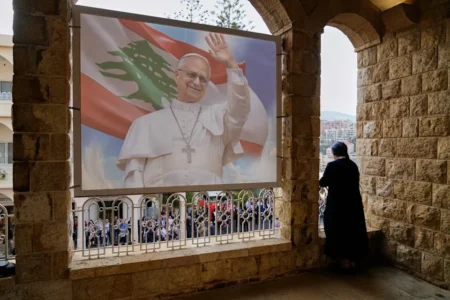In a high-risk military action named “Operation Midnight Hammer,” the United States launched a surprise air raid deep into Iranian airspace without being detected. The operation began around 2:00 AM local time and lasted until morning. The main targets were Iran’s Natanz, Fordow, and Isfahan nuclear facilities.
The operation used seven B-2 stealth bombers, each protected by a fleet of over 100 support aircraft. These aircraft included fighter jets, refueling tankers, and electronic warfare planes. After mid-air refueling near Tehran, the formation split up to reach separate targets. The aircraft used radar-evading paths to remain invisible to Iranian defense systems.
Upon reaching the targets, the bombers dropped 14 bunker-buster bombs. At least two hit the heavily fortified Fordow nuclear site. The others struck key infrastructure near Natanz and Isfahan. The attack continued with several Tomahawk cruise missiles fired at the Isfahan nuclear center to ensure total destruction.
Each bomb weighed around 300 pounds and was designed to penetrate deep into the ground. US forces claim the bombing was highly accurate, destroying the intended targets without any civilian damage. The operation caused widespread damage to Iran’s nuclear program.
The Pentagon reported that Iran’s air defense failed to detect the raid. Surface-to-air missile systems in Tehran remained silent throughout the mission. No counterattack or interception was attempted by Iranian forces, allowing the US aircraft to safely leave Iranian airspace.
Despite the scale of the operation, no American aircraft were hit or tracked. Officials described the mission as one of the most successful stealth air raids ever executed. The Pentagon said the plan had been in preparation for over a year with support from close military allies.
Israel is believed to have assisted in the planning phase. US forces had previously trained for this exact mission in coordination with Israeli defense units. The cooperation focused on simulated air raids, bunker penetration tactics, and navigation strategies to avoid enemy radar.
According to US military sources, the mission marked a shift in strategy by using overwhelming air power without alerting enemy defenses. This success, they say, proves the advanced capabilities of the B-2 bomber and other support aircraft.
The B-2 Spirit bomber, known for its stealth and long-range power, can fly over 6,000 miles without refueling. It carries both conventional and nuclear weapons and is considered one of the most advanced aircraft in the world. Its design allows it to fly undetected by most radar systems.
The US fleet involved in the mission maintained radio silence and used encrypted signals throughout the operation. Real-time tracking was done through satellites and drones positioned outside Iranian airspace.
Analysts say this mission sends a strong signal about US military strength and precision capabilities. It also raises concerns about the security of Iran’s airspace and the readiness of its air defense systems.
Iran has not yet made an official statement regarding the raid or the damage to its nuclear facilities. However, satellite images released by independent analysts show signs of destruction at multiple locations.
This operation may trigger new tensions in the region. Observers are watching closely for Iran’s response in the coming days. Experts suggest that Iran may seek diplomatic channels or conduct cyber operations in return.
The US, meanwhile, has stated that the mission was a preemptive measure to stop Iran’s nuclear weapons development. Officials added that they will continue monitoring Iranian activities and are prepared for any future threats.







